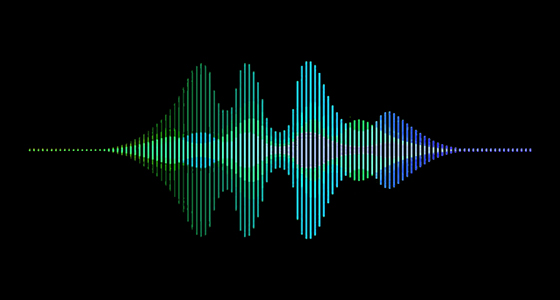EVP Capture
-

The reaction of external listeners to our recordings remains highly sceptical; most disregard the communication as fraudulent and those who cautiously consider it, criticise our methodology. I appreciate that to support the validity of EVP as evidential paranormal phenomena, it would be preferable to experiment only in shielded conditions, but environments such as anechoic chambers are not realistically available or affordable to lay operators. The reduction of extraneous background noise where possible is preferable but I would hesitate to consider only EVP captured in controlled conditions as being credible evidence, as residual environmental sound waves may play a key part in facilitating the transmission of EVP.
By continually refining our practices, when necessary, our approach to optimising the capture of EVP in sittings, evolved into the establishment of three recording guidelines for use in differing environments: in seances, field recordings and in solo experimentation. Capture rates demonstrate the séance room environment provides the best recording outcomes with up to 30% more EVP, followed by field recordings in historic sites, then solitary experiments. The unifying factor that determines how successful we are in all environments, is our state of mind, our use of language and how we behave whilst recording; the conscious actions and motivations of those physically present, have a direct effect on the rate of EVP capture and vocal clarity.
From August 2009 to March 2010 I undertook a study of EVP to gain insight into its nature. With eight months of data, the robustness of the phenomena was self-evident (Fig.1). As the study progressed, it was easy to discern which equipment performed well together, by placing one dictaphone recording onto multiple computers; the outcome was judged by the quantity and clarity of captured EVP. During the study, both units of the Olympus VN2100s resulted in an increased number of EVP with greater coherence, than either the Sony ICD-B600 or Olympus LS10. The Packard Bell and Toshiba laptops run the Windows Vista operating system and Audacity version 1.3.5.0, these settings are still in use and due to their efficacy, the operating systems have not been upgraded. From the results, the Toshiba laptop paired with an Olympus VN2100 proved to be most successful combination to record EVP and remains so. The only change to our methodology post study, is the processing of clips after isolation in Audacity; EVP is cleaned with Adobe Audition, Creative Cloud on an iMac, which has increased their intelligibility.

Fig. 1 Results on the capture rate and clarity of EVP during the study by equipment device. I categorise EVP into three levels; A – clear with a common understanding (15), B – easily heard but ambiguous (16), C – difficult to interpret and ambiguous (17), N – a non-vocal noise, either heard or only present on the recording (18).
When Frederick Jurgensen inadvertently captured human voices whilst recording birdsong, many operators took inspiration from his spontaneous success, to trial the use of an additional background sound, as a source wave for the modulation of EVP. Having obtained the very clear voices of two elderly ladies (20,21) during the initial trial of an electronic dictaphone, without a supplementary source, I question its necessity. As our group recorded in a rural location, I considered what imperceptible residual environmental noise was being manipulated; the sources I considered were radio waves, nearby livestock, Wi-Fi, electrical noise from domestic appliances and the inherent noise of the recording device. Some factors could be controlled by turning off the electrical supply or by shielding equipment, but positive results persisted. We posed the question to communicators, of how sound is modulated to form EVP and received the following response, “then I change the waves” (22), the answer although it affirms that modulation is taking place, does not provide a specific source of its generation.
Please note: the information on this page is an excerpt from my accepted BICS essay. You may download the full text here: CLICK
Analysis
